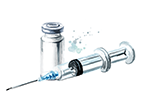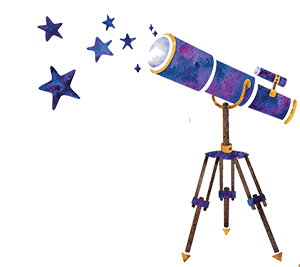 Vaccines work by injecting a small amount of a specific pathogen into the body. Each pathogen has antigens, a type of protein, on its surface, which trigger the immune system to create antibodies that can destroy the antigens. Antibodies are specific to certain antigens, which is why specific vaccines are needed to treat different diseases.
Vaccines work by injecting a small amount of a specific pathogen into the body. Each pathogen has antigens, a type of protein, on its surface, which trigger the immune system to create antibodies that can destroy the antigens. Antibodies are specific to certain antigens, which is why specific vaccines are needed to treat different diseases.
It takes time for our immune system to develop antibodies, which is why we might remain sick for several days after contracting a new virus or bacterial infection and why vaccines are not fully effective until about two weeks after our bodies receive them. Following illness or vaccination, the body creates memory cells that can produce those specific antibodies quickly and more effectively than the initial encounter, thus preventing future disease.1,2
Vaccines introduce weakened (attenuated) or dead (inactivated) forms of a pathogen into the body to trigger the immune response of creating the antibodies. Since vaccines utilize harmless forms of the pathogen, it is much safer to gain immunity from vaccinations than through infection, which can put you at risk for severe illness or death.3,4 You might need multiple doses or booster shots, depending on the vaccine, if the first dose does not provide as much immunity as possible or immunity begins to wear off. Certain vaccines require annual inoculation because the strain of the virus varies from year to year.2,4,5
Vaccination is crucial for developing herd immunity. Herd immunity occurs when enough of a population is immune to a disease that it has difficulty finding a host to infect, diminishing its ability to circulate (sometimes even to the point of extinction), thus lowering the risk of infection among those who were not vaccinated. People with compromised immune systems (e.g., people with cancer or HIV), infants, and the elderly might not be able to receive certain vaccines, so it is important that those who are eligible for vaccines get immunized in order to protect these vulnerable people.2,3
Flu Vaccine
Influenza (flu) is caused by a virus that can lead to severe complications, hospitalization, and death; a flu vaccine significantly reduces these risks, and, while vaccinated people can still contract the flu, the severity of the illness is reduced.5 Each year, there is a different strain of the flu, which is why we need an annual flu vaccine. It is recommended that everyone aged six months or older gets vaccinated in the fall. For the 2021–2022 flu season, the available flu vaccines are quadrivalent, which means they protect against four different flu viruses. Most vaccines are produced by using a virus grown in chicken eggs, but there is a limited supply of egg-free vaccines approved for people 18 years of age or older who have a severe egg allergy.5,6
Fast Fact— The origins of the word “influenza”
Flu, short for influenza, comes from an Italian (and Medieval Latin) word meaning “influence.” At one point, the effect of the flu was believed to be caused by the influence of the stars. The first influenza pandemic occurred around 1580, and the second in 1743, the latter spreading from Rome to England and introducing the word “flu” (then spelled (flue) to the English.
Source: Meriam-Webster site. Word history. Tis the (flu) season: the history of influenza: the stars aligned just so you could feel miserable. https://www.merriam-webster.com/words-at-play/influenza-flu-word-history-origin. Accessed 2 Dec 2021.
The viruses in a flu shot are inactivated, whereas in a nasal spray, the virus is attenuated. Both types of vaccines are safe and effective, but they can cause different side effects. Side effects of a flu shot might include soreness, redness, and/or irritation at the injection site; low-grade headache; fever; muscle aches; nausea; and fatigue. Side effects of a nasal spray might include runny nose, headache, sore throat, and cough; children might experience wheezing, vomiting, headache, muscle aches, and low-grade fever.5
COVID-19 Vaccine
Getting vaccinated for COVID-19 is the safest and most effective way to prevent and slow the spread of the disease. There are two types of vaccines currently approved for use: messenger RNA (mRNA) vaccines and viral vector vaccines.
mRNA vaccines. Unlike traditional vaccines, mRNA vaccines do not require putting a weakened or inactivated virus in the body. Instead, they deliver instructions to cells via mRNA to make a protein found in SARS-CoV-2, the virus that causes COVID-19. This triggers an immune response, and the appropriate antibodies are produced. After these instructions are delivered to the immune system, the mRNA breaks down, so it never enters the nucleus of the cell and does not alter DNA.7–10 Scientists have been studying mRNA vaccines for decades; they have been developed for flu, Zika, rabies, Ebola, and cytomegalovirus.7,9
BNT162b2 (Pfizer-BioNTech) and mRNA-1273 (Moderna) are mRNA vaccines available for use against COVID-19. Evidence shows that, after receiving two doses of these vaccines, the BNT162b2 vaccine is 95-percent effective at preventing COVID-19 in people 16 years of age or older and mRNA-1273 vaccine is 94.1-percent effective at preventing COVID-19 in people 18 years of age or older. Additionally, BNT162b2 vaccine is approved for emergency use in people 12 to 15 years of age.11,12
Notably, one study found that mRNA vaccine effectiveness was similar among people with underlying medical conditions or other risk factors for severe complications caused by COVID-19, different subgroups of healthcare professionals, and racial and ethnic groups that have been disproportionately affected by the pandemic.13
Possible side effects of both vaccines include pain, redness, and/or swelling at the injection site; tiredness; headache; muscle pain; chills; fever; and nausea.11,12
Viral vector vaccines. This type of vaccine uses a modified version of the virus being targeted, known as a viral vector, to deliver genetic material that instructs cells to make harmless proteins found on the surface of the virus. The presence of this protein triggers an immune response, and the appropriate antibodies are created. The genetic material does not enter the nucleus of the cell and does not alter DNA.8,14,15 For decades, viral vector vaccines have been studied for treating diseases such as Ebola, Zika, flu, and HIV.14,15
Ad26.COV2.s (Johnson & Johnson’s Janssen) vaccine is a viral vector vaccine available for use in adults 18 years of age or older. One shot is 66.3 percent effective in preventing COVID-19. Possible side effects include pain, redness, and/or swelling at the injection site; tiredness; headache; muscle pain; chills; fever; and nausea.16
Booster Shots
As of October 21, 2021 both the United States (US) Centers for Disease Control and Prevention (CDC) and the United States Food and Drug Administration (FDA) recommend that people 65 years of age or older and people 18 years of age or older who live in long-term care settings, have underlying medical conditions, or work or live in high-risk settings who got the BNT162b2 or mRNA-1273 vaccine receive a booster shot at six months or more after their second shot. It is recommended that people 18 years of age or older who received the Ad26.COV2.s vaccine receive a booster shot two months or more after their initial dose. Booster shots do not need to be the same brand as the initial dose.17
Bottom Line
Getting vaccinated is crucial to preventing the spread of diseases, including flu and COVID-19. These vaccines are safe and effective, reducing the risk of severe disease, hospitalizations, and deaths.
Sources
1. Microbiology Society website. Immune system. https://microbiologysociety.org/why-microbiology-matters/what-is-microbiology/microbes-and-the-human-body/immune-system.html. Accessed 20 Oct 2021.
2. World Health Organization website. How do vaccines work? 8 Dec 2020. https://www.who.int/news-room/feature-stories/detail/how-do-vaccines-work. Accessed 20 Oct 2021.
3. British Society for Immunology website. How vaccines work. https://www.immunology.org/celebrate-vaccines/public-engagement/guide-childhood-vaccinations/how-vaccines-work#How%20do%20vaccines%20work?. Accessed 20 Oct 2021.
4. UChicago Medicine website. How do vaccines work? 4 Dec 2020. https://www.uchicagomedicine.org/forefront/coronavirus-disease-covid-19/demystifying-vaccines-1. Accessed 20 Oct 2021.
5. Centers for Disease Control and Prevention website. Key facts about seasonal flu vaccine. https://www.cdc.gov/flu/prevent/keyfacts.htm. Accessed 20 Oct 2021.
6. Geisinger website. The science behind the flu shot. 19 Nov 2020. https://www.geisinger.org/health-and-wellness/wellness-articles/2020/11/09/19/23/science-behind-the-flu-shot. Accessed 20 Oct 2021.
7. Centers for Disease Control and Prevention website. Understanding mRNA COVID-19 vaccines. Updated 4 Mar 2021. https://www.cdc.gov/coronavirus/2019-ncov/vaccines/different-vaccines/mRNA.html. Accessed 20 Oct 2021.
8. Mayo Clinic website. Different types of COVID-19 vaccines: how they work. 6 Oct 2021. https://www.mayoclinic.org/diseases-conditions/coronavirus/in-depth/different-types-of-covid-19-vaccines/art-20506465. Accessed 20 Oct 2021.
9. Mullane K. What is an mRNA vaccine? UChicago website. 21 Apr 2021. https://www.uchicagomedicine.org/forefront/coronavirus-disease-covid-19/what-is-an-mrna-vaccine. Accessed 20 Oct 2021.
10. MedlinePlus website. What are mRNA vaccines and how do they work? Updated 18 Oct 2021. https://medlineplus.gov/genetics/understanding/therapy/mrnavaccines/. Accessed 20 Oct 2021.
11. Centers for Disease Control and Prevention website. Pfizer-BioNTech COVID-19 vaccine overview and safety (also known as COMIRNATY). Updated 16 Oct 2021. https://www.cdc.gov/coronavirus/2019-ncov/vaccines/different-vaccines/Pfizer-BioNTech.html. 20 Oct 2021.
12. Centers for Disease Control and Prevention website. Moderna COVID-19 vaccine overview and safety. Updated 15 Oct 2021. https://www.cdc.gov/coronavirus/2019-ncov/vaccines/different-vaccines/Moderna.html. Accessed 20 Oct 2021.
13. Pilishvili T, Gierke R, Fleming-Dutra KE, et al. Effectiveness of mRNA Covid-19 vaccine among US health care personnel. [published online ahead of print, 2021 Sep 22]. N Engl J Med. 2021;NEJMoa2106599.
14. Centers for Disease Control and Prevention website. Understanding viral vector COVID-19 vaccines. Updated 18 Oct 2021. https://www.cdc.gov/coronavirus/2019-ncov/vaccines/different-vaccines/viralvector.html. Accessed 20 Oct 2021.
15. Gavi: The Vaccine Alliance website. What are viral vector-based vaccines and how could they be used against COVID-19? 18 Dec 2020. https://www.gavi.org/vaccineswork/what-are-viral-vector-based-vaccines-and-how-could-they-be-used-against-covid-19. Accessed 20 Oct 2021.
16. Centers for Disease Control and Prevention website. Johnson & Johnson’s Janssen COVID-19 vaccine overview and safety. Updated 4 Oct 2021. https://www.cdc.gov/coronavirus/2019-ncov/vaccines/different-vaccines/janssen.html. Accessed 20 Oct 2021.
17. Centers for Disease Control and Prevention website. CDC expands eligibility for COVID-19 booster shots. 21 Oct 2021. https://www.cdc.gov/media/releases/2021/p1021-covid-booster.html. Accessed 25 Oct 2021.





